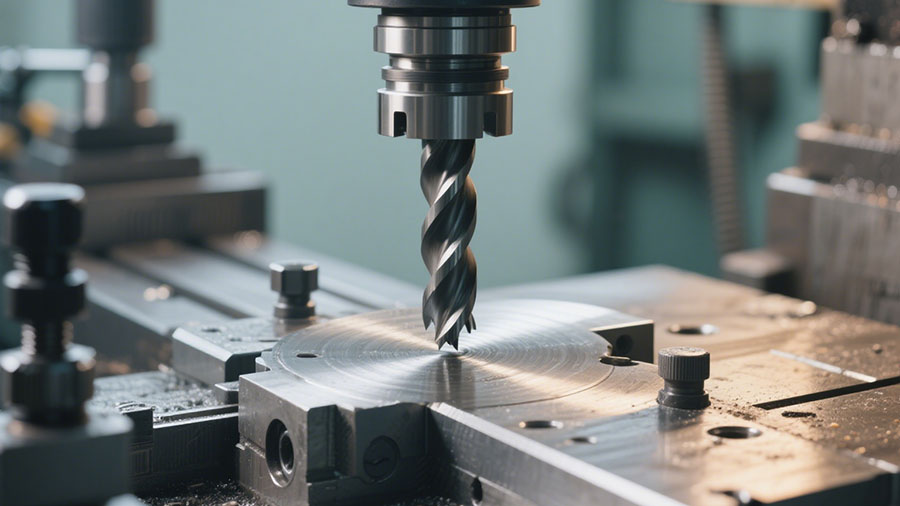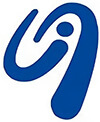In machining, the geometry of the cutting tool plays a decisive role in determining the quality of the finished part, the tool’s life, and the efficiency of the process. One of the most critical parameters in tool geometry is the rake angle. Though seemingly a small detail, the rake angle significantly influences chip formation, cutting force, heat generation, and surface finish.
This article explores the concept of rake angle, its types, how it affects machining performance, and how to select the appropriate rake angle for different materials and operations.
What is a Rake Angle in Machining?
In mechanical machining, the rake angle refers to the angle between the front cutting surface of the tool and the line perpendicular to the cutting direction. This geometric shape directly affects the interaction between the cutting edge and the workpiece, and determines chip formation, cutting force, and surface finish.
The front angle will vary depending on the type and application of the tool. For single point tools used for turning, the side rake angle is usually specified.
In milling, both radial and axial rake angles are defined because each value affects chip deviation and edge strength in different directions. These measurement reference planes are usually aligned with the feed direction and cutting speed vector.
There are two primary rake angles:
Positive Rake Angle
Negative Rake Angle
Additionally, neutral or zero rake is also used in specific situations.
Positive and negative rake choices impact everything from power consumption to surface quality. A positive rake results in a sharper cutting face and reduces force, while a negative rake increases tool strength by thickening the wedge angle.
Types of Rake Angles and Their Characteristics
Positive Rake Angle
A positive rake angle means the tool face slants away from the cutting edge in the direction of chip flow. This configuration:
- Reduces cutting forces
- Facilitates smooth chip evacuation
- Generates less heat
- Improves surface finish
Best suited for:
- Softer or ductile materials (e.g., aluminum, copper, plastics)
- Low-horsepower machines
- Applications where a sharp cutting action is required
Negative Rake Angle
In this case, the tool face slopes toward the cutting edge, offering a thicker and more robust tool geometry.
Advantages:
- Increased cutting edge strength
- Higher tool life in tough or hard materials
- Better suited for interrupted cuts or heavy-duty operations
Best suited for:
- Hard metals (e.g., stainless steel, nickel alloys)
- High-speed or high-feed operations
- Situations where tool rigidity and durability are prioritized
Zero or Neutral Rake Angle
The tool face is perpendicular to the work surface. This angle is often used in carbide tools or when cutting very hard materials.

Why is the Rake Angle Important in Machining?
The rake angle affects the interaction between the tool and the material, controls chip flow, and determines the energy required for material removal. Even small adjustments to the front corner can change the entire machining result.
Low carbon steel processing tests have shown that changing the rake angle from -5 ° to+15 ° can result in a cutting power variation of up to 30%. This not only affects power consumption, but also directly impacts tool wear and stability under load. A more suitable rake angle can reduce cutting force, making the machine run more efficiently and cooler.
The chips formed by the positive rake geometry are thinner and easier to discharge from the front cutting surface. This reduces the risk of chip tumors and improves surface smoothness by up to 40%.
Meanwhile, negative rake angles can distribute stress to larger wedge angles, thereby extending the tool life during hard alloy machining.
The geometric shape of the cutting tool, production output, surface finish requirements, and machine tool stiffness all affect the selection of the rake angle. It is not just a theoretical value, it can also guide chip formation, cutting edge performance, and the thermal path from the tool to the workpiece.
Positive rake angle can usually reduce tangential cutting force by 10-25%, especially when processing ductile materials. This means that you can remove more material with less resistance, thereby increasing the material removal rate and reducing the total stress on the cutting edge.
On the other hand, negative front angles have significantly higher strength. In the transverse fracture test, they exhibit an additional resistance of up to 30%, making them an ideal choice for intermittent cutting or hard alloys. If you are processing tool steel or quenched stainless steel, a negative rake angle can extend tool life without the need for frequent blade replacement.
Actual data shows that the service life of hard alloy blades in high carbon steel processing is 1.8 times longer at -5 ° than at+5 °. This performance improvement cannot be ignored. However, it is equally important to recognize that excessive positive rake angles (over+20 °) can reduce blade strength. This will accelerate the wear of the crescent shaped depression and lead to more frequent re grinding.
If you want to extend tool life while maintaining machining performance, the best way is to balance the front angle so that the depth of the crescent groove and the wear of the rear cutting surface increase at a similar rate.
How does the Rake Angle affect chip formation?
Chip formation is one of the most obvious indicators to measure whether the front angle is favorable. +A front angle of 20 ° (which is common when processing aluminum) often produces clean, curled chips with a shape similar to the number “6”. These chips are easy to discharge and rarely block the cutting surface, thereby minimizing repeated cutting and improving overall surface quality.
In this way, you will obtain compact and fragmented chips that will cleanly break. In automation systems, these chips are easier to handle and reduce the need for chip breakers, especially in continuous machining.
As the negative value of the rake angle increases, the chip compression ratio will also increase. This will increase shear deformation and heat generation, thereby affecting the cutting edge state and chip thickness of the tool. On the other hand, neutral front corners usually form long strip-shaped chips, which can block the cutting area and accelerate the wear of the front corner surface.
How Rake Angle Affects Machining Performance
1. Cutting Forces
A positive rake angle reduces cutting forces by allowing smoother penetration into the workpiece. Negative rake, by contrast, increases resistance at the cutting edge.
2. Chip Formation
Rake angle strongly affects chip flow:
Positive rake produces thinner, curled chips
Negative rake tends to create thicker, compressed chips
Good chip control is critical for automated machining, preventing tool damage and ensuring dimensional accuracy.
3. Tool Life
While a positive rake is sharper and cuts easily, it may wear faster. Negative rake tools are more durable due to a stronger geometry, especially under high load or abrasive conditions.
4. Surface Finish
Positive rake angles generally provide better surface quality, especially when cutting soft materials at low speeds. Negative rake angles may cause more friction and affect surface integrity unless offset by optimized cutting parameters.
Conclusion
The rake angle is a foundational element in cutting tool geometry that directly impacts machining efficiency, tool longevity, chip control, and surface quality. Understanding the differences between positive, negative, and neutral rake angles allows engineers and machinists to make better decisions based on workpiece material, machining conditions, and performance targets.
In an age of precision manufacturing, optimizing rake angle isn’t just about tool performance—it’s about improving overall process reliability, part quality, and production cost-efficiency.



